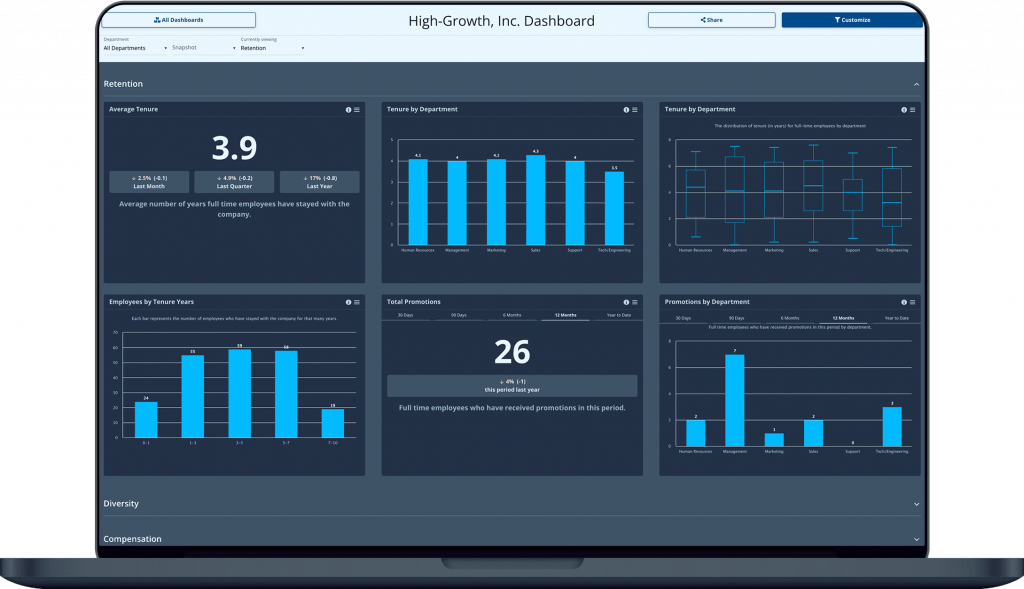2021 was a year that resulted in millions of people quitting their jobs – and at historic rates – being dubbed the “Great Resignation” – an idea proposed by Professor Anthony Klotz of Texas A&M University. Additionally, the Bureau of Labor Statistics recently reported that 4.4 million people quit their positions in September alone, with another historic amount of resignations in November clocking a total of 4.5 million.
So, what led to these millions of resignations? With reasons varying from lack of adequate childcare, to health concerns about COVID-19, workers have felt dispensable and overlooked. As a result, many are still quitting due to reasons HR teams are used to such as burnout, searching for better opportunities, trying their hand at self-employment, or pursuing higher pay. In all honesty, it’s difficult to fully understand all of the reasons with confidence.
So, is the Great Resignation something that can be resolved? How will your organization ensure that you can retain your workers in 2022?
Leveraging Your HR Data
HR analytics involves gathering and analyzing data across your organization. HR data is confidential, sensitive, messy, and often located in multiple systems. It’s not easy to gather and analyze it – unless you have the right metrics and platform in place. Once you do, this information provides valuable insights to help your leadership team develop workforce strategies to improve job satisfaction and increase employee retention.

It’s crucial to know how your workforce is performing and feeling in today’s ever-changing work space. Your HR team needs access to insightful data to understand how your employees work at their peak performance. We understand that HR teams are often asked to do more with less. A single platform can help ensure all relevant information and institutional knowledge is gathered in one place and can be accessed 24/7. Once the data is collected, then your HR team can spot recurring issues and identify potential risk areas that may cause a decrease in retention. When frequent issues and trends are understood, your HR team can allocate training and other resources to these areas before they develop into large, costly issues.
Moving From The Great Resignation to the Great Retention
Organizations are enthusiastic in their search for data-focused answers to some of these questions:
- What are your retention strategies?
- Do you know if they even work?
- Who “owns” retention in your organization? Is it an HR issue? Managers? Leadership?
These are critical questions that you may not know how to answer yet. One of the best ways to begin doing so is by using your HR data and analytics to assess areas of your organization’s performance. Human Resources Today defines HR analytics as “the art and science of connecting data to discover and share insights about your workforce that will lead to better business decisions.”
Technology is changing the way HR acquires and retains its employees – it must in order to keep up with competition and improve processes. An Employee Data Platform provides data and, in turn, is a key advantage in decision-making regarding how to best manage employees, inspire them to reach business goals, and encourage them to stay at your organization.
How do People Analytics Help With Retention?
Do you know what your retention problems are? Do you know how much they are costing you?
HR analytics collect data uniformly, and easily, to help you better understand what’s happening with your workforce retention.
Look at who is quitting, and the costs associated with the loss of that employee. Did you know that replacing one employee costs the equivalent of 2.5 to 4 times their salary? That’s a staggering number. But remember, if you are losing your top performers, you’re also losing their company and market knowledge as well. The overall cost of losing that employee equates to more than money.
Once you’ve identified your retention challenges, then you’ll need to look at what’s causing your attrition. Using HR analytics provides greater insight into factors that tend to correlate to resignations. As an example, how do performance evaluations, promotion wait times, and pay increases correlate with turnover? If you see resignation trends associated with those factors, then you can use that information to strengthen your retention strategy by informing decisions about how often promotions are given and how long it takes for pay increases to go into effect after these promotions.
When it comes to diversity and work experience that your organization provides, it’s important to evaluate resignation rates across your locations, age groups, gender groups, job titles, performance levels, and length of employment. Then you’ll be able to decide which departments and job titles to invest in for the best ROI. As an example, if you see a trend of increased resignations from millennials across all office locations, HR can provide these insights to leaders with recommendations regarding where to invest more retention budget.

When you leverage your HR data and analytics to discover trends and insights, you can then create a workforce retention strategy that is data-driven, not based on opinions or feelings.
So, Who Owns Retention in Your Organization?
Oftentimes, the knee-jerk response is that HR owns retention. But deciding who will be responsible for creating your company’s retention strategy and overall solution should be discussed further in order to decide if it’s solely your HR team’s responsibility, if it’s leadership’s responsibility, or if it’s a joint collaboration amongst multiple teams. It really is up to you and what’s best to support your organization’s strategy and goals.
Just remember, it’s critical to determine who’s responsible for analyzing HR data, and who’s responsible for creating the strategy. This will help your organization be able to leverage the data and make informed decisions for your workforce. Using data to identify problems gives you the opportunity to clearly and collaboratively come up with innovative solutions for retention.
Data is Critical to be Efficient and Effective at Retaining Employees
Employee Cycle offers the visibility into data that your HR and leadership teams need to articulate the issues to be solved and provide potential solutions for increased retention. Without real-time, easy access to HR data, efforts to retain staff are like throwing cooked spaghetti at a wall and hoping for some to stick. It’s ineffective and a waste of resources. See for yourself how easy it is to unify your HR data by creating a free Employee Cycle account.
Receive access to your customized HR data platform with your free account, today. Click here to get started with a demo at zero cost.












